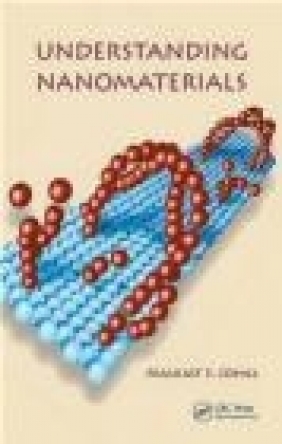Understanding Nanomaterials
Robert J. Rawle, Malkiat S. Johal
Understanding Nanomaterials
Robert J. Rawle, Malkiat S. Johal
- Producent: CRC Press Inc.
- Rok produkcji: 2011
- ISBN: 9781420073102
- Ilość stron: 327
- Oprawa: Miękka
Niedostępna
Opis: Understanding Nanomaterials - Robert J. Rawle, Malkiat S. Johal
With a selective presentation of topics that makes it accessible for students who have taken introductory university science courses, Understanding Nanomaterials is a training tool for the future workforce in nanotech development. This introductory textbook offers insights into the fundamental principles that govern the fabrication, characterization, and application of nanomaterials. Provides the Background for Fundamental Understanding Assuming only a basic level of competency in physics, chemistry, and biology, the author focuses on the needs of the undergraduate curriculum, discussing important processes such as self-assembly, patterning, and nanolithography. His approach limits mathematical rigor in the presentation of key results and proofs, leaving it to the instructor's discretion to add more advanced details, or emphasize particular areas of interest. With its combination of discussion-based instruction and explanation of problem-solving skills, this textbook highlights interdisciplinary theory and enabling tools derived from chemistry, biology, physics, medicine, and engineering. It also includes real-world examples related to energy, the environment, and medicine. Author Malkiat S. Johal earned his Ph.D. from the University of Cambridge in England. He later served as a post-doctoral research associate at Los Alamos National Laboratory, New Mexico, where he worked on the nonlinear optical properties of nanoassemblies. Dr. Johal is currently a professor and researcher at Pomona College in Claremont, California. His work focuses on the use of self-assembly and ionic adsorption processes to fabricate nanomaterials for optical and biochemical applications. ... physical chemists will enjoy building their teaching around the well-explained material in this book ... students will find it clear and informative. In particular, the end- of-chapter questions are valuable. -Chemistry World ... will serve students well in their goal to gain a greater understanding of why nanoscaled systems are of great interest, how they are fabricated, and how they are characterized using a wide variety of analytical instrumentation very commonly found in university and industrial settings. -Marcus D. Lay, University of Georgia, Athens, USA The writing is very fluid. The problems and figures are good. Overall, I learned a great deal about surface science techniques from this manuscript. -Lisa Klein, Rutgers University, Piscataway, New Jersey, USAA Brief Introduction to Nanoscience The Need for Nanoscience Education The Nanoscale Dimension and the Scope of Nanoscience Self-Assembly Supramolecular Science Sources of Information on Nanoscience Intermolecular Interactions and Self- Assembly Chapter Overview Intermolecular Forces and Self- Assembly Electrostatic Forces between Surfaces: The Electrical Double Layer Intermolecular Forces and Aggregation Simple Models Describing Electronic Structure References and Recommended Reading End of Chapter Questions Rudiments of Surface Nanoscience Chapter Overview Fundamentals of Surface Science Adsorption Phenomena: Self-Assembled Monolayers Surface Chemistry References and Recommended Reading End of Chapter Questions Characterization at the Nanoscale Chapter Overview Surface Tensiometry: The Surface Tensiometer Quartz Crystal Microbalance Ellipsometry Surface Plasmon Resonance Dual Polarization Interferometry Spectroscopic Methods Nonlinear Spectroscopic Methods X-Ray Spectroscopy Imaging Nanostructures Light Scattering Methods References and Recommended Reading End of Chapter Questions Types and Uses of Some Nanomaterials Chapter Overview Supramolecular Machines Nanowires Carbon Nanotubes Quantum Dots Langmuir-Blodgett Films Polyelectrolytes . Model Phospholipid Bilayer Formation and Characterization Self-Assembled Monolayers Patterning DNA and Lipid Microarrays Cited References References and Recommended Reading End of Chapter Questions Appendix Glossary Index
Szczegóły: Understanding Nanomaterials - Robert J. Rawle, Malkiat S. Johal
Tytuł: Understanding Nanomaterials
Autor: Robert J. Rawle, Malkiat S. Johal
Producent: CRC Press Inc.
ISBN: 9781420073102
Rok produkcji: 2011
Ilość stron: 327
Oprawa: Miękka
Waga: 0.46 kg





























